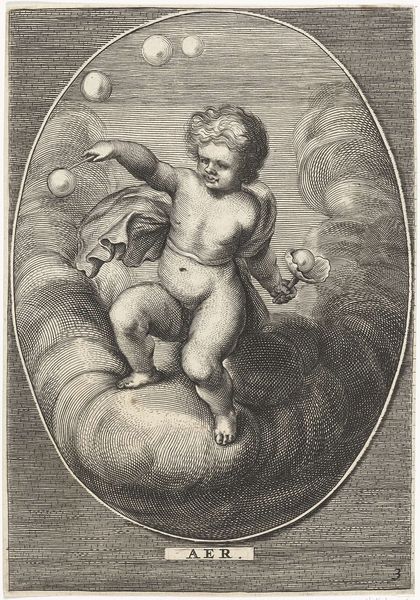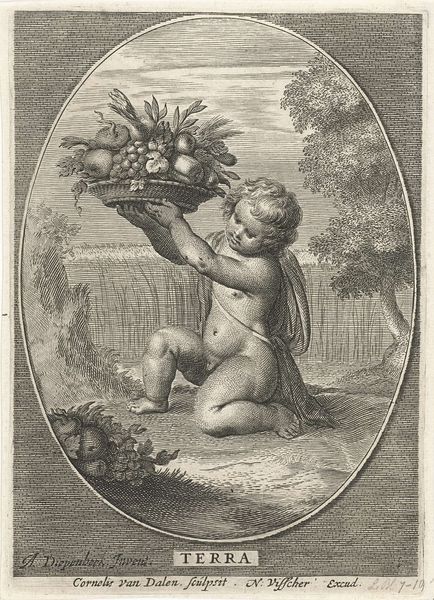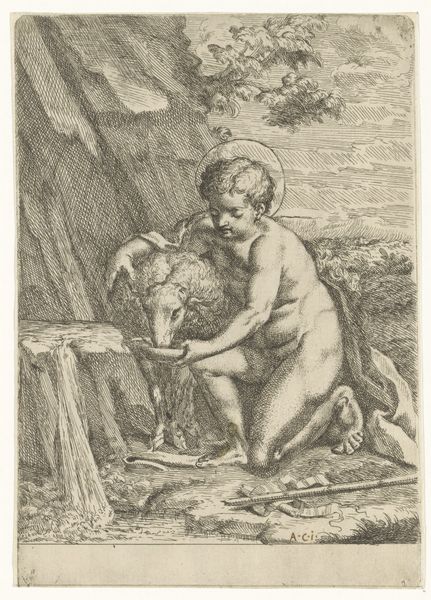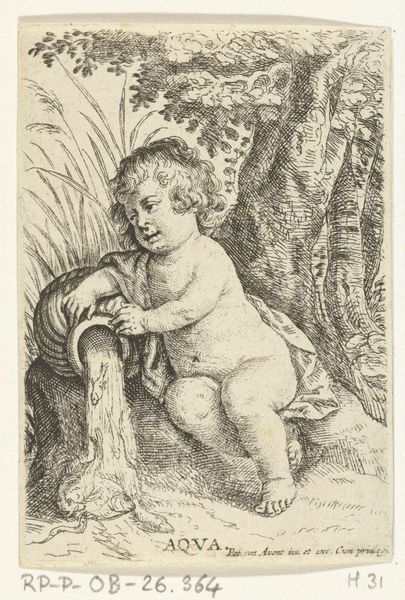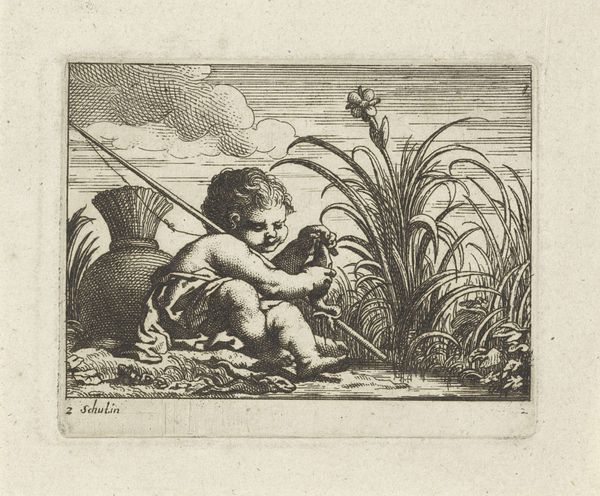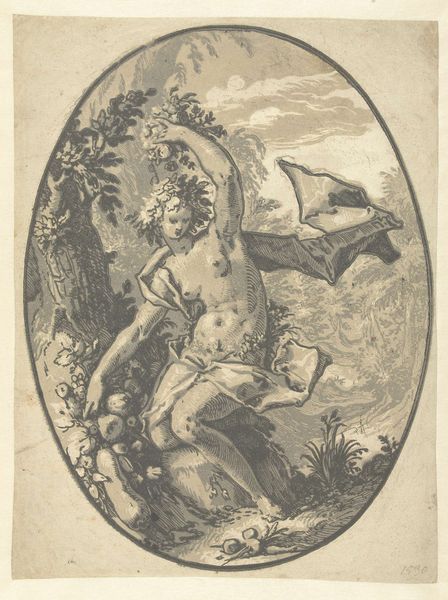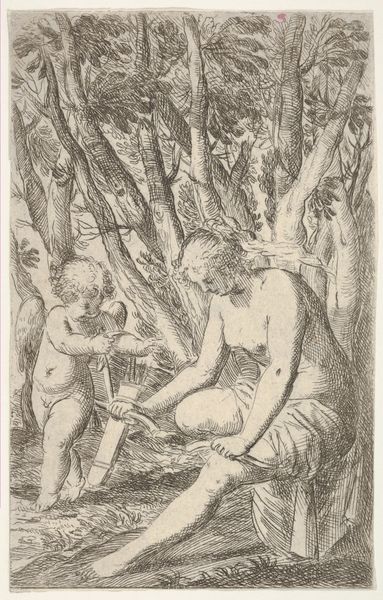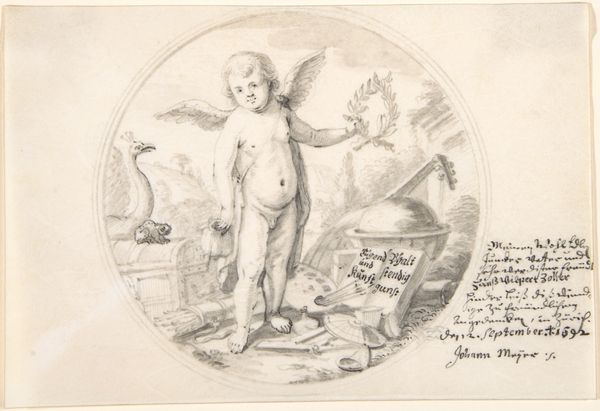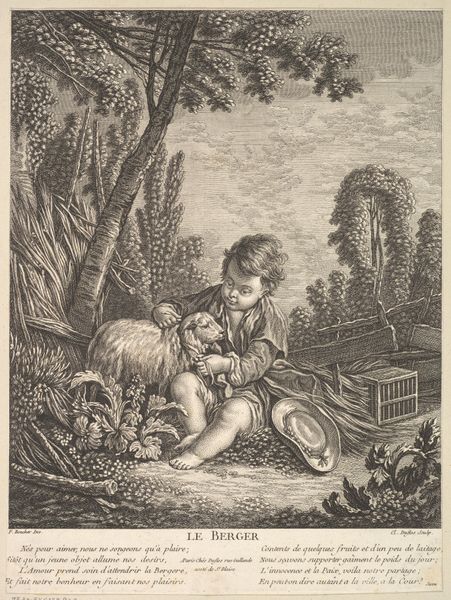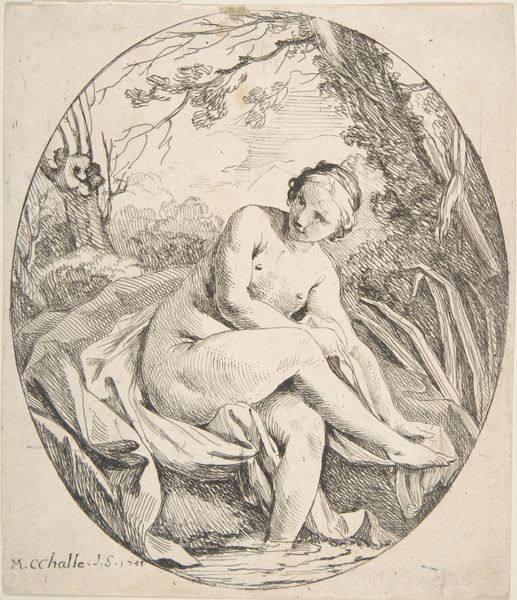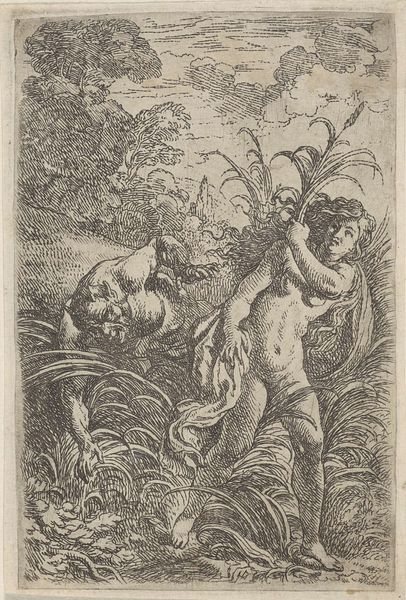
Element water als kind met vishengel leunend op kruik waar water uitstroomt bij oever in ovaal 1648 - 1706
0:00
0:00
anonymous
Rijksmuseum
engraving
#
allegory
#
baroque
#
landscape
#
figuration
#
engraving
Dimensions: height 179 mm, width 127 mm
Copyright: Rijks Museum: Open Domain
Editor: Here we have "Element water als kind met vishengel leunend op kruik waar water uitstroomt bij oever in ovaal"—"Element water as a child with fishing rod leaning on a jug from which water flows at the shore in oval," created sometime between 1648 and 1706 by an anonymous artist. It's an engraving. The scene feels so peaceful, almost like a memory. The detail is astonishing. What catches your eye in this piece? Curator: Oh, the way water—or rather, Aqua, as the inscription says—is rendered with such playful abundance, cascading from that overturned urn…it's positively baroque in its exuberance! And isn't it curious to find Water personified as a chubby Cupid fishing? I always find myself pondering, is he fishing for something literal or is it symbolic? Perhaps capturing souls, mirroring the element's fluidity and mystery? Editor: I hadn't thought of that, so interesting! What about the landscape—the reeds, the solitary cloud...do they add to that allegory? Curator: Precisely! The landscape whispers of an idealized world, untouched, almost dreamlike. These serene landscapes frequently provide settings where allegories unfold in Baroque art. Maybe it’s saying something about human attempts to contain or control the wild, ever-flowing nature of Water. Or simply an artist’s tranquil reflection. Editor: It’s like the landscape is another character. Thank you, I hadn't considered those details at all! Curator: It reminds us, perhaps, that there's always a little magic hidden within these seemingly simple engravings.
Comments
No comments
Be the first to comment and join the conversation on the ultimate creative platform.


